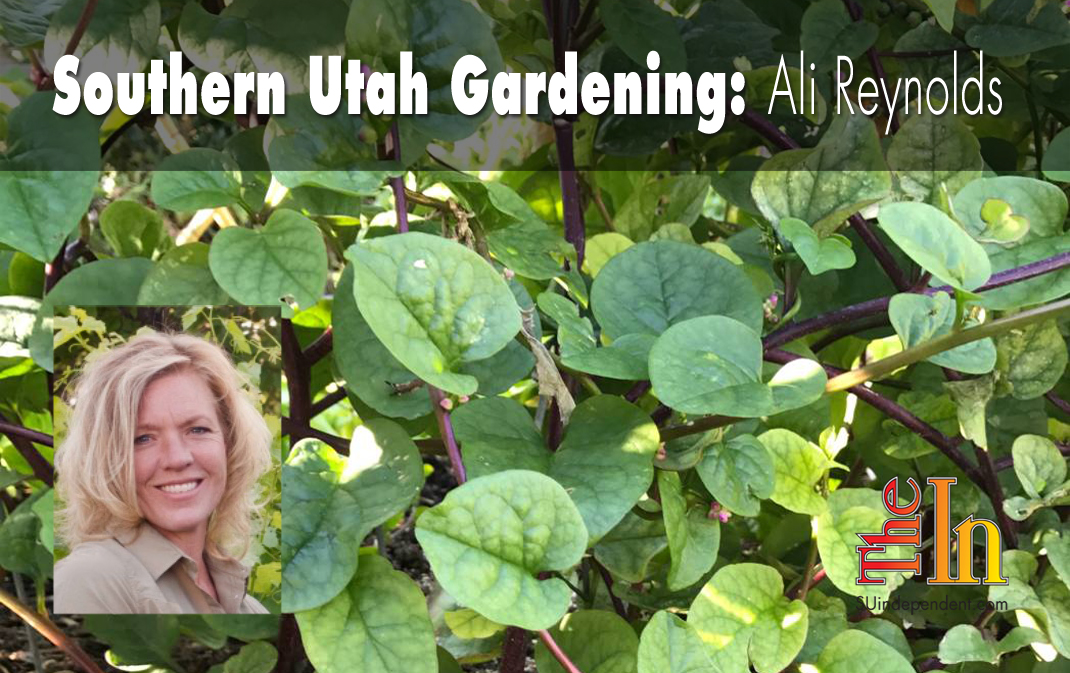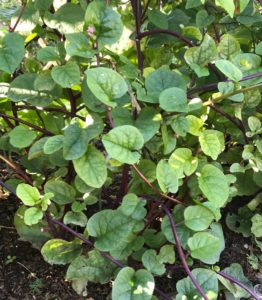 Spinach is an easy-to-grow cool-season crop, and now is the best time to get in the ground for the best success in growing savory spinach. There are several choices to choose from, whether you like a thick, heavily savoyed Bloomsdale spinach or a smooth baby-leaf spinach such as Corvair, they are all a great addition to your spring garden and dinner plate!
Spinach is an easy-to-grow cool-season crop, and now is the best time to get in the ground for the best success in growing savory spinach. There are several choices to choose from, whether you like a thick, heavily savoyed Bloomsdale spinach or a smooth baby-leaf spinach such as Corvair, they are all a great addition to your spring garden and dinner plate!
Spinach, like many vegetables, likes loose soil that is rich in organic matter. I usually add 2 to 3 inches of compost, mixing it in the top several inches of soil with a cultivating hoe or digging fork. I then add to the soil, fishmeal, blood meal, or some other fairly nitrogenous organic fertilizer. As a general rule of thumb for organic fertilizers, use 5 pounds per 100 square foot. Work the fertilizer into the soil surface, smooth and level the bed, and you’re ready for sowing.
You can grow spinach from transplants, but I have experienced more success when sowing seeds. Spinach grown from seed develops deeper roots that enable the plant to reach farther for moisture and nutrients, which helps it withstand heat and drought. I spread the seed as evenly as possible over the prepared surface, working the seeds in by lightly chopping with a hand cultivar. Then I sift a light layer of compost over the bed to keep the surface from forming a crust that might make it tough for seedlings to break through. Keep the soil moist until the seedlings emerge in about 10 days. I never let the soil dry completely while the plants are growing because the stress can cause premature bolting.
I will sow intervals of spinach about every two to three weeks, beginning early in March until the first of May. I don’t bother any later than that because of the hot summers will cause spinach to go to seed quickly. Once the days begin to shorten in the late summer, another crop or two can be planted with the help of shade cloth.
After a few weeks of growing spinach, plants are ready to be thinned. Remove enough plants to leave about 4 inches between those remaining. These thinnings are ideal for salads! A couple of weeks later, you can begin to harvest. Don’t remove the whole plant, but instead take the older basal leaves, stem and all, and leave the plants firmly rooted. Taking the older leaves actually prolongs the life of the plant. I prefer the small, smooth, tender leaves harvested no bigger than 2 to 3 inches long for salads. As the season goes on, the leaves tend to coarsen. At that point the flavor is the richest and the spinach is ideal for cooking. When the plants finally begin to flower, it’s time to yank them, and into compost pile they go.

Another unusual choice of spinach is Malabar Spinach (pictured). This spinach prefers the heat of summer to really take off, making it great for growing in our hot southern Utah summers. Malabar spinach is a much hardier, thicker leaf spinach that needs trellising as it is a climber. Large or small leaves can be harvested and eaten fresh or cooked. Give it a try this summer. You might be pleasantly surprised.
One of my favorite spring salads is spinach tossed with the addition of almonds, mandarin oranges, cranberries, and a drizzle of warm vinaigrette made with red wine vinegar, honey, and olive oil and a dash of sea salt and a crack of pepper.
Articles related to “Southern Utah Gardening: Growing savory spinach”
Southern Utah Gardening: It’s time to plant carrots in your southern Utah garden



